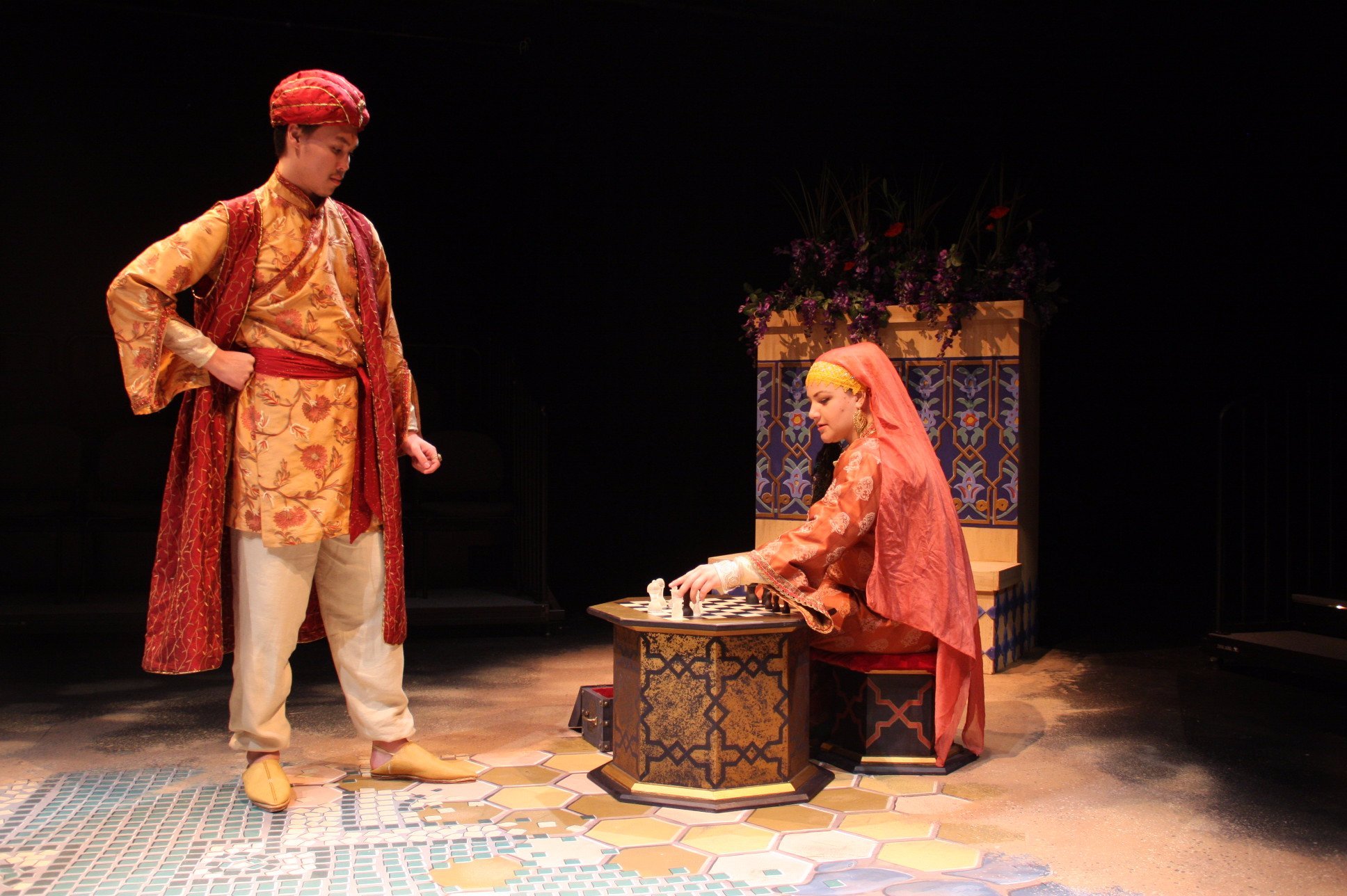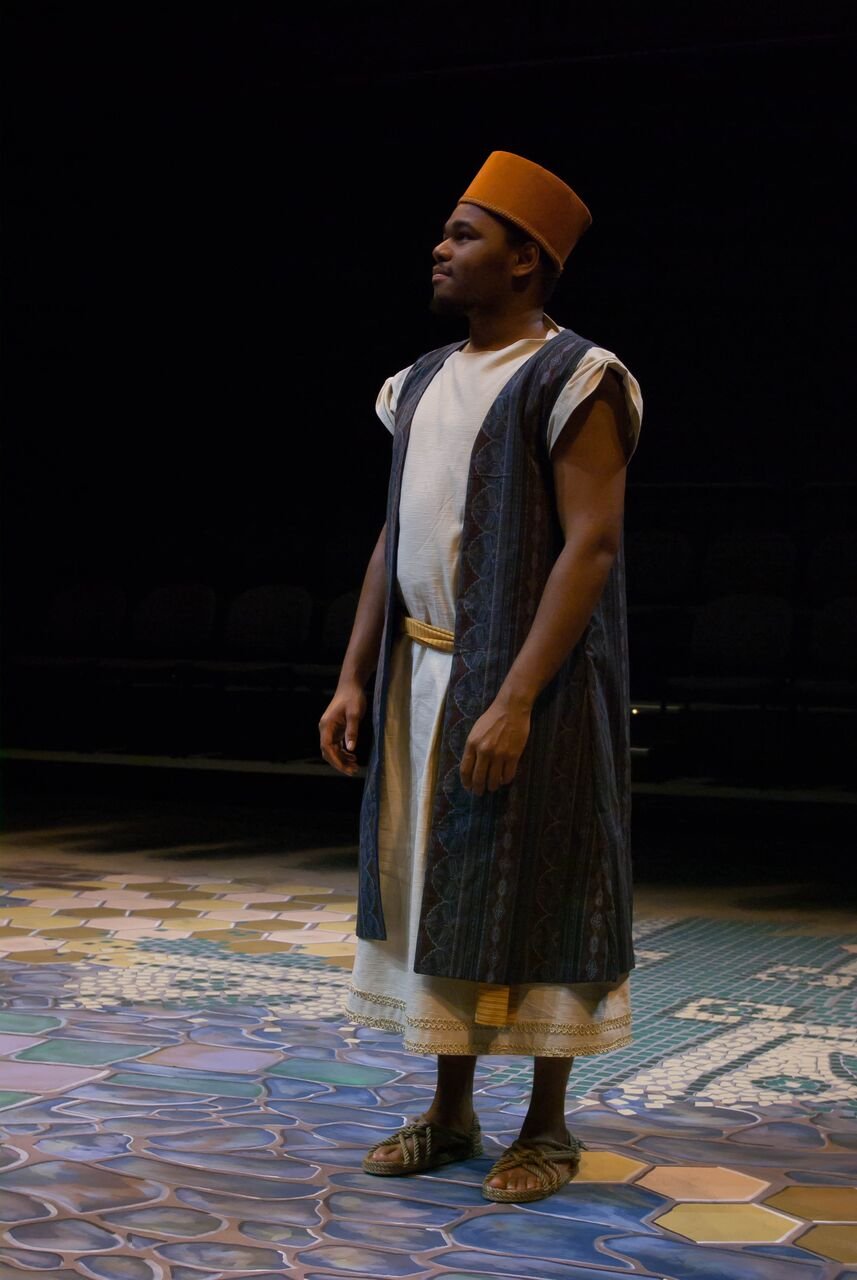Nathan the Wise
KCACTF Region 5 Nominee for Costume Design 2018

Nathan the Wise: Sultan and Sittah (Photo courtesy of CSBSJU Theater Department)

Nathan the Wise: "Sultan" rendering

Nathan the Wise: "Sittah" rendering

Nathan the Wise: Sultan and Sittah playing chess (Photo courtesy of CSBSJU Theater Department)

Nathan the Wise: Sittah costume construction close up

Nathan the Wise: Sittah (Photo courtesy of CSBSJU Theater Department)

Nathan the Wise: "Patriarch" rendering

Nathan the Wise: Patriarch front view (Photo courtesy of CSBSJU Theater Department)

Nathan the Wise: Patriarch back view (Photo courtesy of CSBSJU Theater Department)

Nathan the Wise: Al Hafe with cloak (Photo courtesy of CSBSJU Theater Department)

Nathan the Wise: Al Hafe reversible vest (Photo courtesy of CSBSJU Theater Department)

Nathan the Wise: "Al Hafe" rendering
Nathan the Wise
Written by Gotthold Ephraim Lessing
Directed by Kaarin Johnston 2017
Co-Designed with Prof. Amelia Cheever
Gotthold Ephraim Lessing’s Nathan the Wise addresses the interactions and relationships between Christian, Muslim, and Jewish characters of various backgrounds in the city of Jerusalem during the 1200s. Despite being set in the distant past, the themes this play handles are relevant to modern audiences. To make this more apparent, the design concept of the show as a whole was meant to exaggerate the presentational aspect of the story.
One of the most important visual aspects of this production was the use of bold colors in the lighting, set, and costumes. Color became a tool to unify the appearance of the show, as well as to show relationships between characters. For example, I reserved orange for members of the Sultan’s court and used red accents as a clue that certain characters were related by blood. Professor Amelia Cheever and I worked closely to ensure the cast looked cohesive. As a co-designer for this show I was responsible for designing costumes for Al Hafe, the Sultan, Sittah, and the Greek Orthodox Patriarch. After compiling research for each character, I devised my own quasi-historical vision of the past–balancing a respect for the cultural and religious backgrounds of the characters with a somewhat stylized approach to fit the production as a whole.